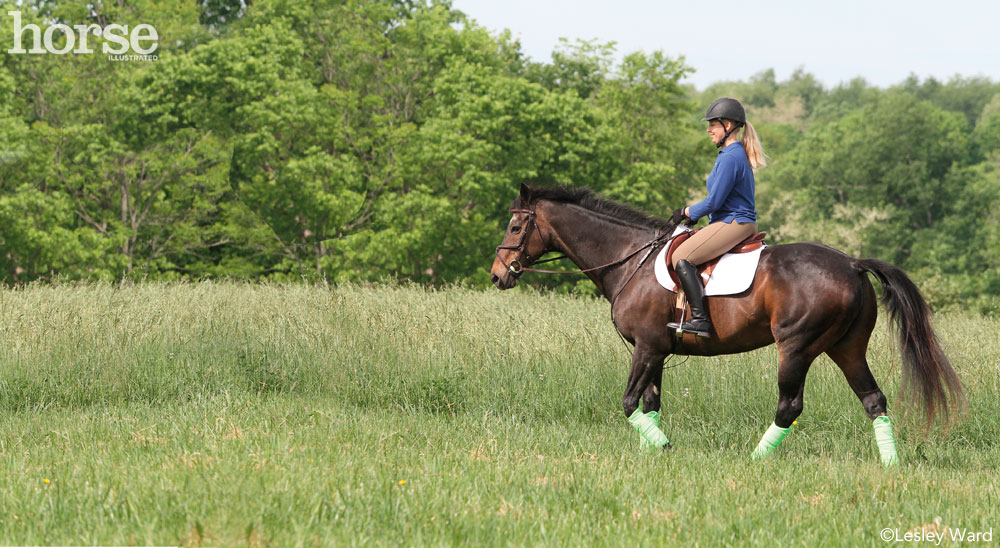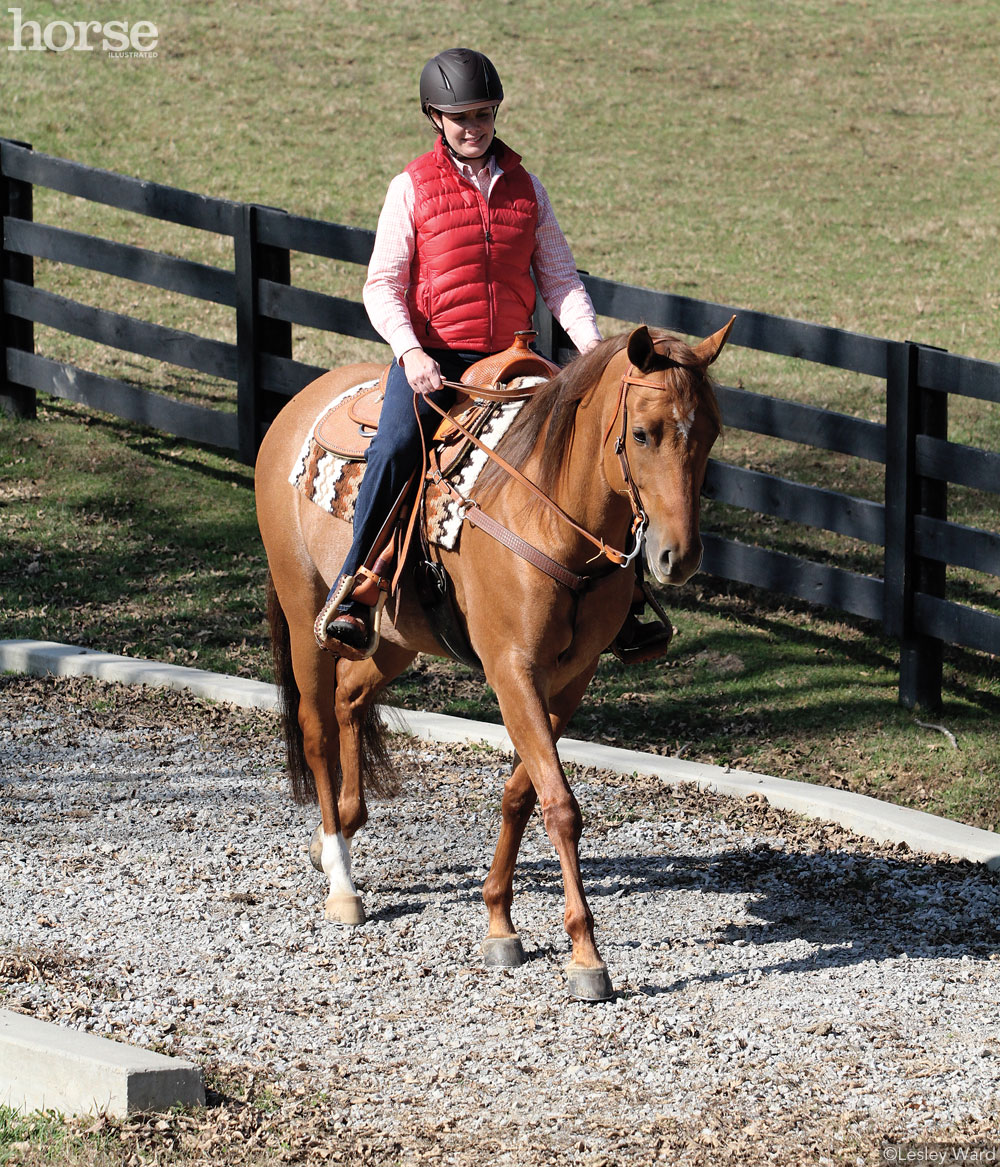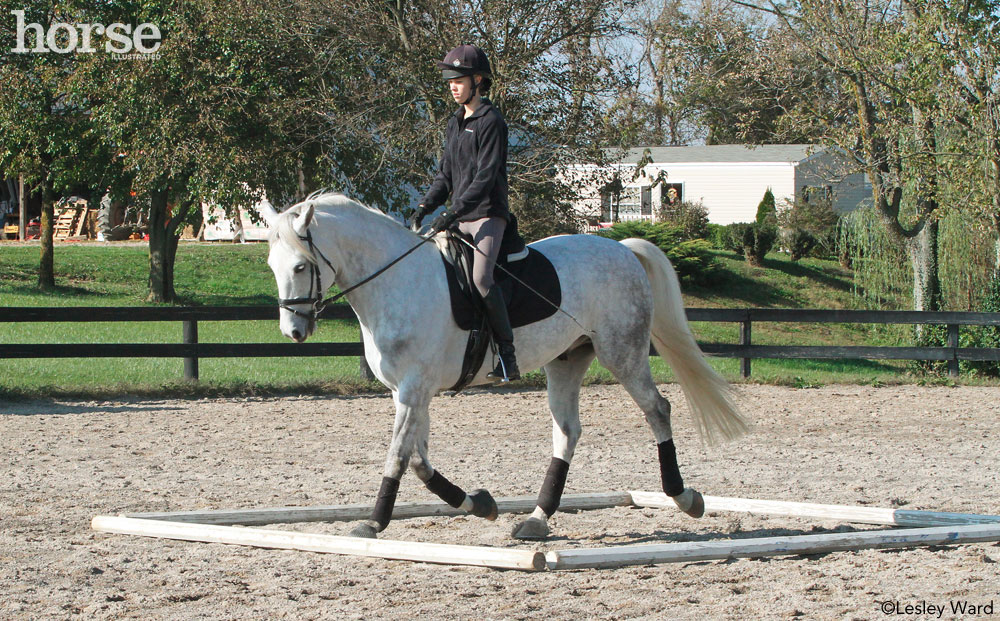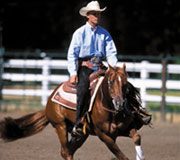
Ride on rolling hills to improve balance, coordination and straightness.
Are you and your horse wearing circles in the arena and not making any progress? Cross-training just might be the tool you need to get to the next level as a rider or competitor. Not only does cross-training prevent boredom and repetitive motion injuries from everyday schooling, but it improves the equine body in ways that even exceptional riding within any single sport can’t achieve.
Benefits of Cross-Training for Horses
Varied training develops more efficient muscle function. Through an integrated program, muscles can be strengthened in their correct roles: either to stabilize and support posture or to move legs. Further, mixed exercises wakeup the nervous system to override muscle memory habits, resulting in fuller, more expressive motion.
Ride on Different Surfaces
One of the easiest ways to improve your horse’s athleticism and fitness is to exercise him on various surfaces throughout the week. This not only fine-tunes his proprioception (ability to sense body position, movement and balance) but also leads to fuller use of muscles and supporting soft tissue. Injury and rehab data shows that horses worked consistently on the same surface every day are more susceptible to strains, especially those that exercise mostly in groomed all-weather arenas day after day. The nerve signals to legs and muscles become dull from repetitive motion. Because the horse isn’t having to make adjustments to respond to a different surface underfoot, there is less participation from the nervous system and movement muscles it controls. In other words, the horse isn’t getting as much from his workout as he could.

Changing from groomed arena footing to a field or hard driveway can improve muscle function.
Muscles become stronger in proportion to the amount of stress put on them. The same applies to bones. As a general rule, deeper footing stresses muscles, while harder surfaces stress bones. Having access to a variety of riding surfaces allows you to target both systems as needed. If you are limited to an arena for riding, find creative ways to add time on different surfaces. This can be as simple as:
- A brisk afternoon walk up and down a firm driveway;
- Riding around for 20 minutes on a grassy lawn;
- Warming up in a round pen or paddock with different type of footing than arena.
Most horses that supplement their arena riding with weekly trail rides receive the stimulation of different surfaces as a natural outcome of these excursions. If you don’t trail ride or have access to trails, it’s critical that you get creative about finding ways to ride on different footing other than your arena.
Add a Terrain
The postural adjustments and stride changes that result from riding on uneven terrain lead to impressive results, including stronger abdominal muscles, straighter movement and balance, increased joint flexion, and coordination. A well-rounded training program includes one day a week of riding outside on uneven terrain.
If you have access to trails with rolling hills, use them! In fact, for the types of muscle recruitment needed for most disciplines, rolling hills give better results than riding up and down steep inclines. Many riders mistakenly believe they need access to steep hills to make any kind of strength difference, but this is not the case. One hour of walking and jogging on undulating terrain strengthens your horse’s entire ring of muscles that creates movement, both the topline extensor muscles (going uphill) and the flexor chain of muscles (riding downhill).
Use Ground Poles
For riders who don’t have trail access or live in flat areas with no hills, a good alternative is to incorporate weekly workouts using ground poles. Bear in mind that ground pole routines can and should be tackled in every gait. Many riders get stuck riding only trotting exercises. For the purposes of basic conditioning, ground pole exercises don’t need be complicated. In fact, ones that enable a horse to maintain straightness and balance, rather than over-reaching or flinging himself at the poles, lead to more positive improvements. Below are a few of my favorites.
1. Snake Over Poles
Place several ground poles of any length end to end, forming a long, straight line of poles. In an energetic walk, ride a tight serpentine back and forth over this line, being sure to change your horse’s bend with each loop. This exercise strengthens hip flexors and stabilizers, the thoracic sling, and the adductor muscles required in lateral movements.

Use four poles in a square to ride a cloverleaf pattern. This will help create symmetry and straightness.
2. Basic Box
Set up four ground poles (8-foot poles are ideal here) in a box with the poles touching at each corner. If you have the means to, raise the corners of the box by placing poles on a block or riser. Begin by walking a cloverleaf pattern, with the center of the clover originating in the middle of the box. Focus on riding precise bending lines, keeping a steady rhythm over the poles, and maintaining light rein contact. Now ride the same figure in the trot. This exercise creates symmetry and straightness by helping the horse use both sides of his body equally. It also develops the thoracic sling of muscles and promotes a rounding motion in the horse’s spine.
3. Random Rails
Regardless of discipline, it is absolutely essential that your horse learns to organize himself in the canter. This means he develops a stride that is adjustable, not braced, and relatively comfortable to ride. Many horses with disproportionate strength in their front ends tend to pull themselves forward in the canter, rather than push from their hindquarters. This makes their canter either quick and tense or lazy and dull.
To correct how your horse uses himself in canter, use the random rails exercise. Toss down several ground poles around your arena in no particular order or spacing. Now, strike off in the lope or canter and ride around the arena crossing over these poles in any order, getting creative with your loops and patterns. The purpose is not to jump the poles, but to use them to “bounce” the horse’s stride up through his back so that you create more jump and lift with each step.
This exercise works by its random nature. Without a predicted line to follow, the horse does not anticipate and begin rushing. Further, riding over poles interrupts his habitual canter stride and by doing so, it causes him to recalibrate for an instant. To catch his balance and maneuver over the pole without falling forward on his nose, the horse must lower his hindquarters more and lighten his forehand. All this leads to an improved canter.
By incorporating a variety of exercise activities into your schooling routine, both you and your horse can benefit with fun and fitness.
Jec Aristotle Ballou is the author of 101 Dressage Exercises for Horse & Rider and Equine Fitness. She resides in Santa Cruz, Calif. www.jecballou.com
This article originally appeared in the September 2015 issue of Horse Illustrated magazine. Click here to subscribe!





